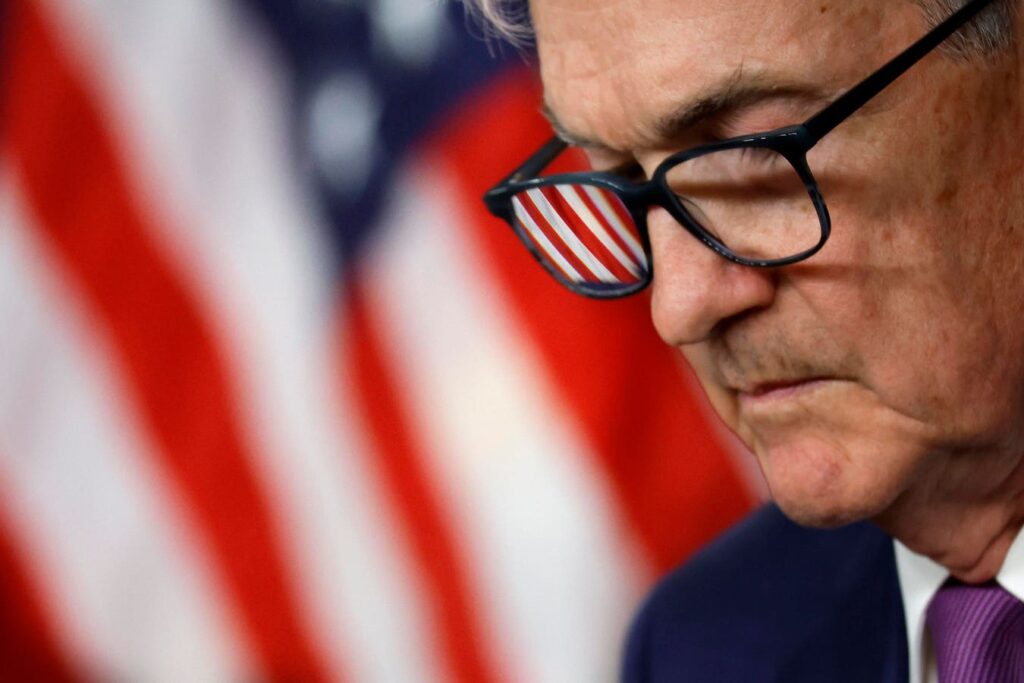Topline
The Federal Reserve said Wednesday afternoon it won’t move interest rates, matching expectations from economists and investors for the central bank, despite repeated, loud requests from the Oval Office to slash rates.
Fed Chairman Jerome Powell will talk to reporters Wednesday as Trump deems him a “major loser” and a … More
Getty ImagesKey Facts
The Fed’s rate-setting Federal Open Market Committee released its decision to hold rates steady at 4.25% to 4.5% at 2 p.m. EDT Wednesday following its two-day monetary policy meeting.
“The risks of higher unemployment and higher inflation have risen,” the committee said in a statement, judging, “uncertainty about the economic outlook has increased further” as tariffs shake the economy.
Traders overwhelmingly expected the Fed to keep rates at the 4.25% to 4.5% range they’ve sat since December: Contracts linked to Fed policy bets priced in 98% odds of a hold, compared to a 2% chance of a 25 basis-point cut, according to CME Group’s FedWatch Tool, while economists at the three largest investment banks – J.P. Morgan, Goldman Sachs and Bank of America – all predicted the Fed will keep rates firm this week.
“Our policy rate is in it is in a good place to stay as we await further clarity on tariffs,” Fed Chairman Jerome Powell told reporters Wednesday.
Crucial Quote
The Fed is in a “good place to wait and see” before moving on interest rates, Powell said Wednesday. “We don’t think we need to be in a hurry. We think we can be patient.”
Fed Meeting This Week Follows Trump’s Threats To Fire Powell
This week’s decision didn’t bring much in terms of fireworks, but President Donald Trump identified Powell as one of his top targets in the early days of the president’s second term as the Fed declined to cut rates. Over the last month, Trump has called Powell “Mr. Too Late,” a “total stiff” and a “major loser” amid his demands to lower rates. Trump reportedly discussed firing Powell, a move which comes with shaky legal footing, but has since backed off. Powell was appointed to his post as the U.S.’ top monetary policy official by Trump in 2017.
Powell Declines To Strike Back At Trump
Powell fielded two questions regarding the high-profile criticism from Trump, and deflected both times. Asked what he thought following Trump’s termination threat, Powell responded “I don’t have anything more for you on that,” and the Fed chief said Trump’s rate cut requests don’t “affect our doing our job at all.” Powell previously made clear he believes the president lacks the legal authority to remove him before his term expires in 2026, but had not explicitly addressed the latest bout of name calling.
Key Background
The Fed only nominally determines the target federal funds rate, the fee which financial institutions must pay when lending to each other in overnight transactions, but its monetary policy heavily influences borrowing costs from corporate debt offerings to student loans. Higher rates tend to slow economic growth as companies tighten spending in response to elevated borrowing costs’ impact on bottom lines, while lower rates typically stimulate the economy as companies loosen their belt and spend more freely thanks to cheaper loans. The Fed operates on a dual mandate system to keep inflation manageable and employment robust. The inflation mandate has largely taken precedence over the last four years after inflation roared to a four-decade high in 2022. Inflation has moderated slowly since then, and the Fed’s preferred measure of price changes came in at a four-year low of 2.8% in March, though that’s still well above the central bank’s 2% goal, and economists widely expect tariffs will lead to a sizable increase in consumer prices. The labor market has proven steady, as the U.S. added a better-than-expected 177,000 jobs last month as the unemployment rate held at 4.2%.
What Does The Fed Need To See To Cut?
Powell signaled central bankers are comfortable waiting on monetary policy, but it’s still highly likely the Fed will further lower rates this year, with traders pricing in 99.7% odds of a cut in 2025. Goldman’s chief U.S. economist David Mericle wrote Sunday it’s likely even high inflation wouldn’t “deter” the Fed from cutting rates if there’s evidence the “tariff shock hits the economy.” Among the data points which could cause the Fed to cut would be a notable increase in unemployment, weak job growth and a decline in capital goods orders, a measure of how much companies are spending, according to Mericle. Goldman projects the Fed will cut rates by 25 basis points apiece at its July, September and October meetings, resulting in a target federal funds rate of 3.5% to 3.75%.
Further Reading
Read the full article here


